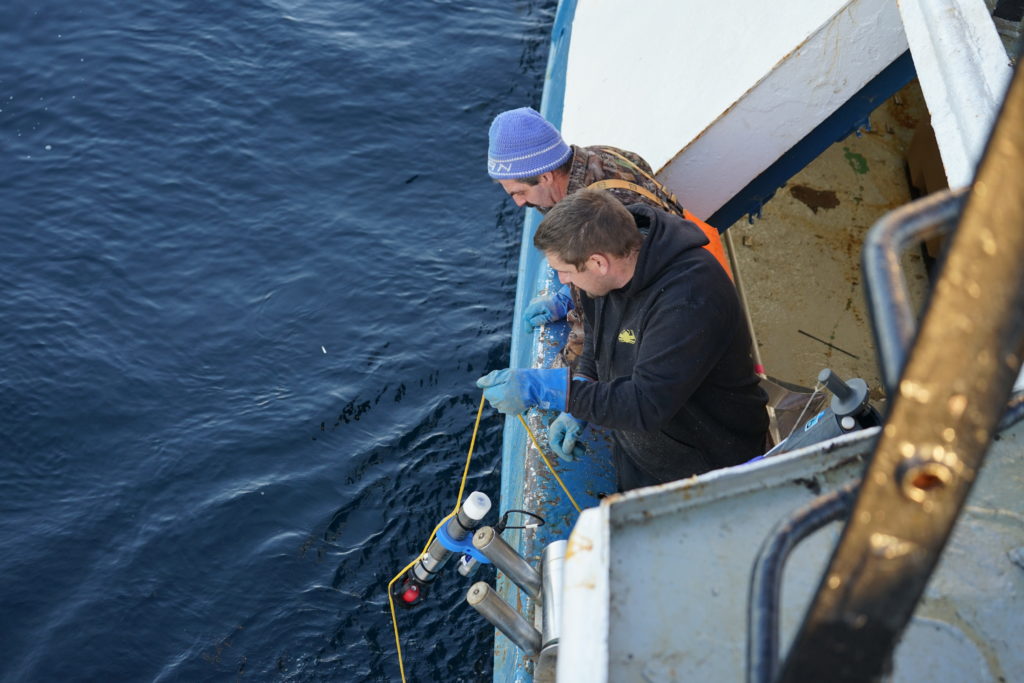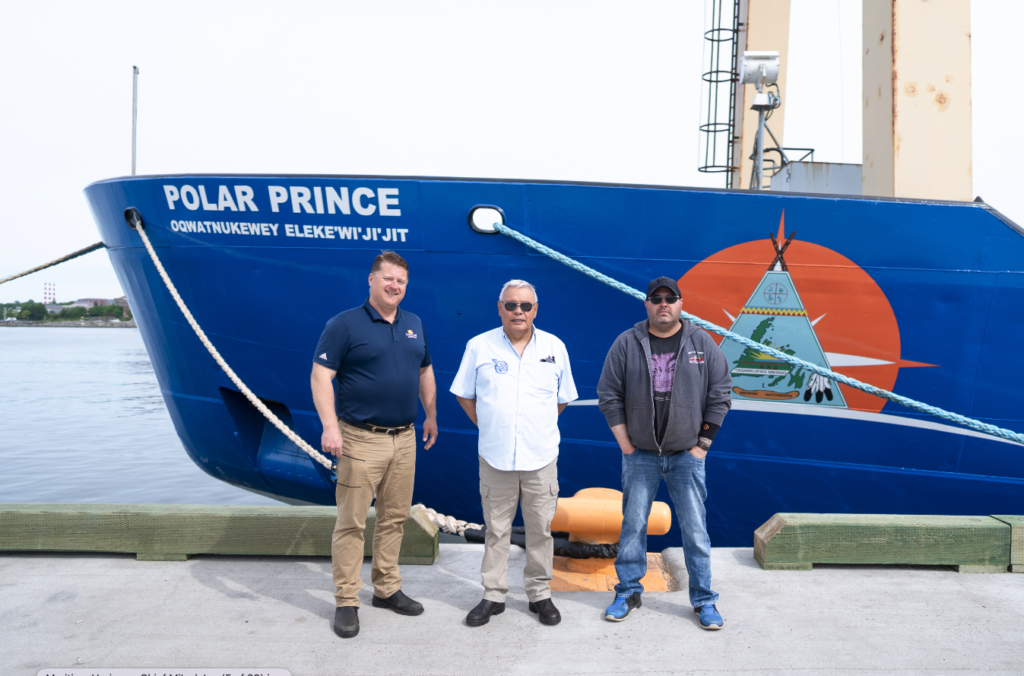Fusing Indigenous knowledge with advanced environmental DNA technology

The most advanced environmental DNA (eDNA) technology is now being combined with Indigenous knowledge creating a bold new vision for environmental stewardship.
Through the formation of new research collaborations, eDNAtec and their Indigenous partners are able integrate the powerful insights of both DNA sequencing technology and Indigenous Knowledge to better understand the impacts of climate change in Canada’s North, Inuit Nunangat.
How eDNA works
All organisms shed DNA into their environments. Small water samples are collected in areas of interest and with eDNA sequencing technologies, can be analyzed to identify thousands of organisms – including bacteria, insects, plants, fish and marine mammals – to yield a complete picture of biodiversity in an ecosystem.
Challenging conditions
In terms of climate change, the Arctic is warming four times faster than the rest of the planet, which affects fish stocks, coastal economies and food security across vast areas of Inuit Nunangat.
“Inuit Nunangat is a vast region with formidable weather conditions and remote, difficult terrain,” said Dr. Greg Singer PhD MBA, Chief Technology Officer at eDNAtec. “These factors make traditional techniques for environmental monitoring both challenging and costly, which has limited environmental surveys in the North to a few areas and certain species.
Data is therefore not abundant and full biodiversity is not well understood. The advent of eDNA technology in this region truly is a game changer.”
Empowering local communities
“eDNA tools will enable Inuit people to do research on questions that matter to them and the eDNA approach aligns with the Inuit philosophy that the ecosystem needs to be looked at as a whole,” said Dr. Singer. “This will serve as a template that can be replicated across Canada, empowering local communities to close biodiversity knowledge gaps and assist in marine sustainability and conservation.”
This builds on the Canada’s Ocean Supercluster project called the OceanDNA system which partnered eDNAtec, Nunavut Fisheries Association (NFA), Energy Research and Innovation Newfoundland and Labrador (ERINL) and the federal Department of Fisheries and Oceans (DFO), and started September 2019.
May 2022, NFA and eDNAtec expanded on this project and formed a research alliance that is incorporating eDNA sample collection into NFA’s annual fisheries research and tracking programs to improve understanding of the marine environment and management of fishery resources.
“We have been building capacity using eDNA water sampling techniques on our commercial and research vessels,” said NFA Executive Director, Brian Burke. “This research, which is taking place in the harsh conditions of Canada’s Eastern Arctic, is being incorporated into NFA’s annual fisheries research and tracking programs to improve understanding of the marine environment and management of fishery resources.”

In October 2021, Miawpukek Horizon Maritime Services – an indigenous business operating in Atlantic Canada – joined forces with eDNAtec in a Memorandum of Understanding to deepen scientific knowledge of our oceans, build capacity and promote environmental stewardship.
“This collaborative model combining Indigenous marine operations and eDNA research services increases our competitiveness, opens doors to new opportunities and the research will provide an unprecedented understanding of the oceans,” says Miawpukek Horizon Managing Director, Richard MacLellan. “This partnership will add standardized and robust eDNA sampling systems to the Arctic research vessel, Polar Prince, as they are easy to deploy on vessels – even operating fishing vessels. We will offer training to indigenous cadets and crews, to collect samples from marine ecosystems, which would then be analyzed with eDNA sequencing systems.”
Unparalleled accuracy
The involvement of Indigenous communities when monitoring the impacts of climate change in the North is critical. Before now, Inuit participation in biodiversity measurement has largely been limited to collecting data on species of interest – sustenance hunting and fishing – but little information has been collected to draw a clear picture of the whole ecosystem function.
“By combining state of the art eDNA technologies with input from governments, academia, industry, fisheries and indigenous communities, we are creating a new way to see into the biological layer of the ocean using a powerful, collaborative platform. This also complements the Indigenous Knowledge that has already been included in projects like the Nunavut Coastal Resource Inventory” explained Dr. Singer. “eDNA sampling can now be completed in a fraction of the cost required for conventional field sampling and reveals an order of magnitude more species.
Accessible sampling tools
The use of eDNA sample collection tools does not require technical skill or scientific expertise, Dr. Singer added. “eDNA tools are accessible to non-experts and provide an ideal means to leverage indigenous knowledge, so it’s accessible to communities with little in the way of existing scientific infrastructure. This means that eDNA sampling can be performed by people who live in or adjacent to study areas.”
Inuit capacity-building must also go beyond just collecting samples. “Capacity must include curation and ownership of samples and data,” explains Singer. “There must be training not only in field work, but also in science and data interpretation.”
This advanced approach to environmental management contributes directly to the Government of Canada’s Arctic and Northern Policy Framework, creating jobs, fostering innovation and growing Arctic and northern economies. It helps to position Canada as an international Arctic and climate change leader, while establishing a Canadian-led ocean management cluster from Atlantic Canada, a region that is recognized globally for its environmental management and ocean technologies.
Of equal importance is how this aligns with four priority areas identified by the National Inuit Strategy on Research, which includes advancing Inuit governance in research, aligning funding with Inuit research priorities, building capacity in Inuit Nunangat research, and ensuring Inuit access, ownership, and control over data and information.
Fisheries, oceans, aquatic habitat and marine waterways are critically important to Indigenous people. These new collaborations will empower local communities by involving them more actively in decision-making and stewardship in the areas where they live and work. The goal is to provide a complete picture of biodiversity, such as identifying endangered, harmful and invasive organisms as well as commercially important species by integrating Local Knowledge directly with scientific approaches to biodiversity measurements and monitoring.